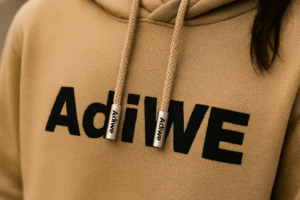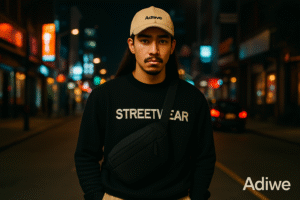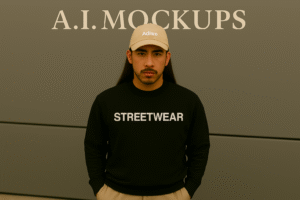Worried about inconsistent quality in your streetwear? Bad products can destroy your brand's reputation. I'll show you how we maintain top quality.
To ensure quality control in streetwear production, you need robust systems for checking materials, monitoring the making process, and inspecting finished garments against approved standards before shipment.
As the owner of Adiwe, a streetwear factory in China with five production lines, quality is everything to me. My clients, whether they are KOLs or established trend brands like Fifty Fifty from England, expect top quality. They trust us to deliver streetwear, like hoodies and t-shirts, that not only looks good but is made to last. Many brands, especially those exporting to North America, England, and France, face challenges with manufacturers who can't quite match their vision or quality expectations. Let's explore how to get quality control right.
How do you ensure quality control in manufacturing?
Are you unsure how factories really maintain consistent quality? Costly mistakes can happen if processes aren't solid. I'll explain how we control it.
Quality control in manufacturing is ensured by setting clear standards, meticulously checking raw materials, conducting in-process inspections during production, and performing a final thorough evaluation of finished products.
At Adiwe, ensuring quality control throughout the manufacturing process is a core part of our B2B wholesale operations. It's not just one step; it's a series of checks and balances.
First, Pre-Production Planning (PPP) is vital. This starts with a detailed technical package (tech pack) from the client. We then create pre-production samples (PPS). These samples are reviewed and approved by the client, like Fifty Fifty, before we even think about bulk production. This step is crucial, especially for their complex designs which require a lot of specific craftsmanship.
Next, Raw Material Inspection (RMI). Before any fabric is cut or any accessory is attached, we inspect them. We check fabrics for defects, color consistency against approved swatches, and weight. We also check zippers, drawstrings, and other customizable accessories to ensure they meet the agreed-upon quality and specifications. This prevents problems from the very start.
Then, In-Process Quality Checks (IPQC) happen on the production line. Our supervisors and dedicated QC staff monitor various stages of sewing and assembly. They look for correct stitching, seam strength, and adherence to the design. For complex items like hoodies with multiple panels or special applications, these checks are frequent.
Finally, Final Quality Control (FQC). Before packing, a percentage of the finished garments (often based on AQL – Acceptable Quality Limit standards) are thoroughly inspected. We check measurements, overall appearance, cleanliness, and packaging.
| Manufacturing QC Stage | Key Activities | Purpose |
|---|---|---|
| Pre-Production Planning | Tech pack review, PPS creation & approval | Align on expectations, confirm manufacturability |
| Raw Material Inspection | Fabric checks (defects, color, weight), accessories | Prevent use of faulty materials |
| In-Process Quality Checks | Line inspections, critical point monitoring | Catch and correct errors during production |
| Final Quality Control | AQL inspection, measurement, appearance checks | Ensure finished goods meet client standards |
This multi-stage approach helps us deliver very trendy, top-quality products consistently.
What is quality control in the clothing industry?
Is "quality control" in apparel a bit of a mystery? It's much more than just a quick glance. I'll break down what it truly means.
Quality control in the clothing industry means ensuring every garment meets pre-defined standards for materials, construction, fit, appearance, and labeling before it reaches the customer or client.
In the clothing industry, quality control (QC) is a comprehensive process designed to ensure that products meet the expectations of our clients, like clothing brands and KOLs. It's not just about avoiding major defects; it’s about consistency and adherence to very specific criteria.
First, we establish Defining Standards. These standards come from the client's tech pack, approved samples, and sometimes industry best practices. For instance, a client like Fifty Fifty will have specific requirements for the feel of their hoodie fabric or the precision of their logo application.
Then, we focus on Key Areas of Inspection:
- Fabric Quality: We check for weaving defects, dyeing inconsistencies, correct weight (GSM), and proper hand-feel. Color matching to Pantone shades or approved lab dips is crucial.
- Stitching and Construction: This includes checking stitches per inch (SPI), seam strength, no skipped or broken stitches, and general neatness of all sewing. For complex styles, the construction integrity is paramount.
- Measurements and Fit: Each garment is measured against the specifications in the tech pack. We have defined tolerance levels for all critical points of measure (POM). A good fit is essential for streetwear.
- Appearance and Finishing: This involves checking for proper pressing, cleanliness (no stains or dirt), no loose threads, and overall visual appeal. The garment must look perfect.
- Labeling and Packaging: All labels (brand, size, care, country of origin) must be correct and properly attached. Packaging instructions, like folding methods and polybag type, must also be followed.
| Clothing QC Checkpoint | What We Look For | Why It's Important for Streetwear |
|---|---|---|
| Fabric | Defects, color accuracy, weight, feel | Foundation of the garment's look and durability |
| Stitching | SPI, seam strength, neatness, no skipped stitches | Ensures garment longevity and clean aesthetics |
| Measurements & Fit | Adherence to spec, consistent sizing | Critical for customer satisfaction and brand image |
| Appearance & Finishing | Cleanliness, no loose threads, proper pressing | First impression, shows attention to detail |
| Labeling & Packaging | Correct information, placement, proper presentation | Legal compliance and brand presentation |
For Adiwe, this detailed approach to QC ensures our clients receive personalized, top-quality products that enhance their brand.
How can quality control be achieved?
Want to know the practical steps for truly achieving great quality? It might seem complex, but there are clear methods. I'll lay them out.
Quality control is achieved through very clear communication, detailed specifications, approved master samples, robust multi-stage inspection processes, and a dedicated, well-trained quality team.
Achieving consistent quality control in streetwear production, especially for B2B wholesale, relies on a combination of clear processes and a committed team. It's something we focus on daily at Adiwe.
First, Clear Communication and Detailed Tech Packs are absolutely fundamental. The tech pack is the blueprint. It must include all details: sketches, measurements, fabric specifications, trim details, logo placement, and stitching instructions. When a client like Fifty Fifty provides a very detailed tech pack for their complex hoodie designs, it helps us minimize misunderstandings from the start.
Second, Golden Samples or Pre-Production Samples (PPS) are essential. Once we make a PPS based on the tech pack, it’s sent to the client for approval. This approved sample becomes the "golden standard" against which all bulk production garments are compared. No bulk production begins without this approval.
Third, Supplier Vetting and Partnership for raw materials is key. We work with reliable fabric mills and accessory suppliers who understand our quality requirements. Consistent, high-quality inputs make it easier to produce high-quality outputs. This is part of ensuring our customizable fabrics are always top-notch.
Fourth, Worker Training and Empowerment plays a big role. Our workers on the five production lines are trained in specific quality standards and techniques. They are also encouraged to identify potential quality issues early. Skilled craftsmanship is vital.
Finally, Continuous Improvement through feedback loops is important. If issues are found during inspections, we analyze why they happened and implement corrective actions to prevent them in the future. This applies to our processes and any feedback we get from clients about logistics or payment methods, for example.
| Method to Achieve QC | Description | Impact on Streetwear Quality |
|---|---|---|
| Detailed Tech Packs | Comprehensive design and construction specifications | Reduces ambiguity, ensures design accuracy |
| Approved Pre-Production Samples | Client-approved sample that serves as the quality benchmark | Guarantees alignment before mass production |
| Reliable Material Sourcing | Vetting and partnering with quality fabric/accessory suppliers | Ensures consistent and high-quality raw materials |
| Skilled & Trained Workforce | Educating production staff on quality standards and techniques | Enhances craftsmanship and reduces errors on the line |
| Multi-Stage Inspections | Checks before, during, and after production (e.g., AQL) | Catches defects early, ensures final product meets standards |
| Feedback & Improvement | Analyzing defects and client feedback to refine processes | Leads to ongoing enhancements in quality output |
By implementing these methods rigorously, we can confidently offer top-quality, personalized design, and very trendy streetwear to our clients.
Conclusion
A robust, multi-stage quality control system is crucial for producing streetwear that meets client expectations and builds a strong brand reputation in the competitive fashion market.




